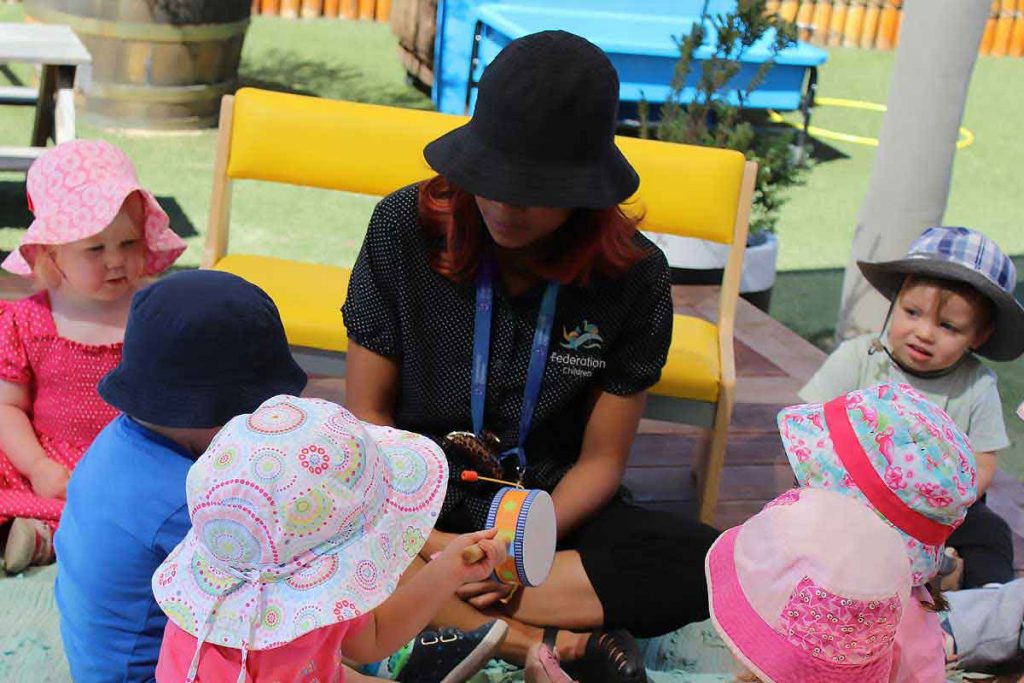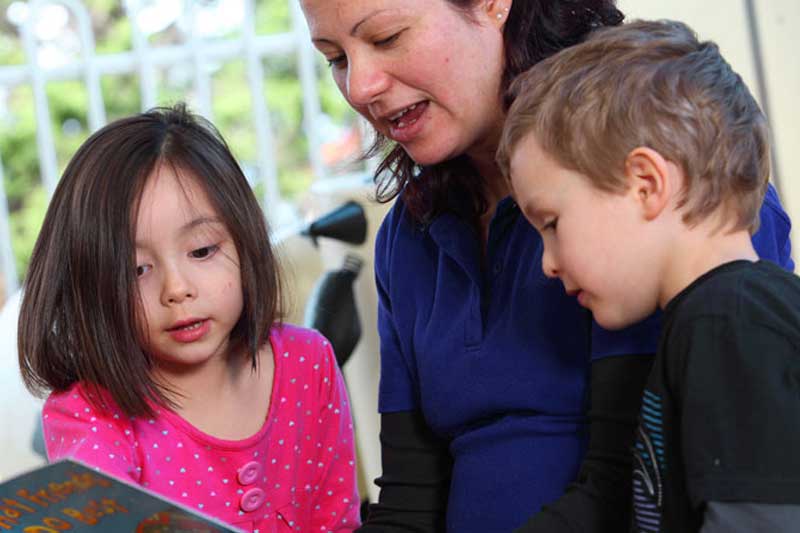Child Wellbeing Articles
We pride ourselves on being a reputable source of quality information related to early childhood.
Child restraint and booster seat road rules
Children under 7 years must be properly restrained when traveling in a motor vehicle;
- Under 6 months – Approved rearward-facing child restraint.
- 6 months to 4 years – Approved rearward-facing OR forward facing child restraint with inbuilt harness.
- 4 years to 7 years – Properly fastened and adjusted approved forward facing child restraint with built in harness OR an approved booster seat with a properly fastened and adjusted seatbelt or child safety harness.
ALSO
If a car has two or more rows of seats, children under 4 years must not travel in the front seat.If all rear seats are being used by children under 7 years, children aged 4 years and under 7 years may travel in the front seat provided they use an approved booster seat.
What about weight?
A child who is too heavy or tall for the restraint recommended for their age, should use a restraint in the next age category.
Did you know it’s an offense to;
- Cross the road within 20 meters of a pedestrian crossing. Take the time to press the button and show your kids the right way to cross the road.
- To leave your vehicle without removing the ignition key when the driver is over 3 meters from the vehicle or there is a child or children under the age of 16 left in the vehicle. Children should never be left inside an unattended vehicle.
For more information about vehicle child restraint safety please visit the VicRoads website.
Children and traffic
Children can be hit by cars running into traffic, playing on or around driveways, playing in the street and making errors of judgement when crossing the street. Before the age of ten, children have not yet developed the skills and knowledge to handle risky situations.
Their impulsive actions can often take drivers by surprise. It is a mistake to assume that children can handle traffic risks by themselves, without help from parents.
Parents can help in the following ways, bearing in mind the age and developmental stage of the child:
- Set clear limits for where they can walk safely. Find places away from streets driveways or parking lots – choose locations such as fenced areas, parks and playgrounds.
- Practice how to cross the street safely in every day situations such as going to the shops, visiting a friend or going to school. Always set a good example by crossing a street properly and using crossing facilities where available.
- Teach them the basic elements of crossing safely, using the Stop, Look, Listen, Think approach.
- Stop one step back from the curb.
- Look and listen for traffic.
- Decide whether it is safe to cross.
- Keep looking and listening during the crossing.
- Talk about road rules in simple terms so that the child understands the reasons for various restrictions and what can happen when rules are broken.
- Teach your child to get in and out of the car on the curb side, avoiding the dangers from passing cars.
Beware carbon tax compensation scam
SCAMwatch is warning Australians to be alert to scam calls offering to pay carbon tax compensation into your bank account or asking survey questions about the carbon tax.
How the scam works
- You receive a call from a scammer calamine got be from the federal government or a federal government department.
- The scammer will ask you for your bank account details in order to pay a carbon tax compensation payment into your bank account.
- Early reports are that the scammer will offer $5,000 in compensation however this amount may vary from call to call.
The scammer may ask you if you would like the compensation paid via a direct deposit or via cheque. - If you give the scammer your bank details they will gain access to your money and any personal details which are linked to you bank account.
- Some scam callers may also claim to be running a survey on the incoming carbon tax.
Protect yourself
- If you receive a phone call out of the blue asking for your bank account or personal details, or claiming you need to pay more money to receive a compensation payment, hang up immediately.
- Be alert to scam survey calls which ask for personal and financial details.
- The Australian Government will never call you to ask for your bank account details or to offer you carbon tax compensation.
- If you’re not sure that a call is a scam you can check by using independently using official contact details, never use phone numbers or email addresses provided by the caller.
- NEVER provide or confirm your personal details over the phone unless you made the call using details you found yourself and you trust the other party.
- If you think you have provided bank account or credit card details to a scammer, contact your bank or financial institution immediately.
Report
You can report scams to the ACCC via the report a scam page on SCAMwatch or by calling 1300 795 995.
Protecting your image, your communications, your reputation
When you send something electronically, either via your phone or over the internet, you lose control over who sees it or what they do with it. You may never be able to permanently delete the image or text. Before you send anything electronically, think about where it might end up.
Do you know who you are sending it to?
You might be tricked into thinking you are communicating with a friend, but can you be sure it is them holding the mobile or looking at the computer screen.
Do you know what the receiver will do with it?
Even if you are sure who is at the other end, can you really trust them? If your relationship turns sour, can you be sure that they won’t use that text or image against you?
Do you want it to be around forever?
Once you have shared something in digital format, it can easily be distributed to others and posted on the internet. Once you put something on the internet, it can never be permanently deleted. Think about this before you create something digital.
How will this affect your future?
A future employer might research you using internet search engines and decide not to hire you if they find inappropriate images or posts by you. Images of children taken by you could end up in the collection of online predators. This might result in law enforcement attempting to identify the victim in the images and this could cause you and your family unnecessary stress and humiliation.
What should you do before it happens to you?
Think twice before communicating or agreeing to share images with someone using technology.
Keep it light – Held tight – and Out of sight
Theft of wallets and purses are again on the rise. Protect your valuables when out in the shopping districts. Here are some helpful hints.
Keep it light
Don’t carry valuable or unnecessary items in your handbag or purse. Keep the amount of jewellery, keys, bank books, credit cards, cash or other valuables you carry with you to an absolute minimum (BPAY, EFTPOS or credit transactions are safer than carrying cash).
Held tight
Shoppers should always have physical contact with their bags. Always have a bag in your lap when seated, never beside you. If you must put it down, place your foot or the leg of the chair through the carry strap to prevent it being removed without your knowledge. Know where your handbag is. Never provide thieves with an invitation by leaving purses/wallets on top of open bags. They should stay shut at all times and remain close to the person. Never leave a bag unattended in a shopping trolley, as hundreds are stolen this way each year. Thieves commonly work in pairs and can distract shoppers while an accomplice steals your belongings. Hold on to purses/wallets tightly at the checkout counters. Do not attempt to put them down while transferring groceries into the shopping trolley. Place the bag strap over your shoulder on the side away from passing traffic. The body of the bag should be held in front of your body, not to the side where it can be viewed and grabbed by passers-by. For this reason you should always walk on a footpath facing oncoming traffic.
Out of sight
Keep zips and clasps done up at all times. Do not advertise the amount of money you are carrying by opening your purse/wallet where people can see into it. Before withdrawing money from an ATM, look around you for any person that may be watching you or waiting nearby. Place your money in your purse, wallet or bag immediately after the transaction, and move away to a position where you can safely count the withdrawal. Do not count the money out in the open. If a bag has to be left in the car, place it in a locked glove box, under the seat or out of sight in the boot. Don’t move goods from the inside of your car to the boot at the same location as it is to be parked. A thief may be watching. Anything you don’t that will make you LOOK confident and strong will make you a less likely target for thieves.
No amount of money is worth the risk of personal injury or worse.


